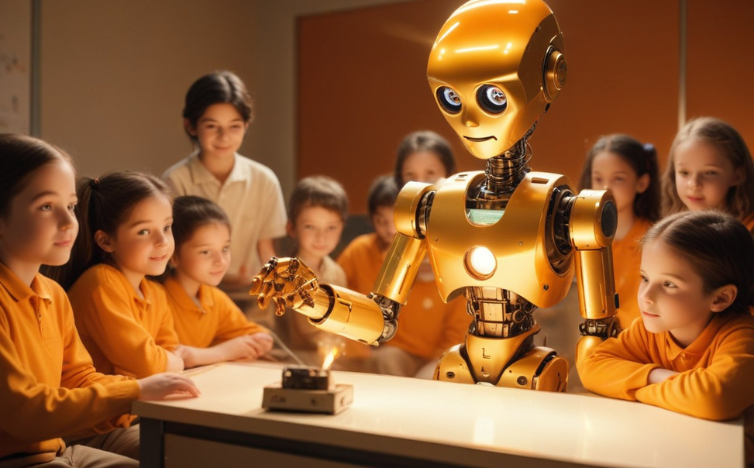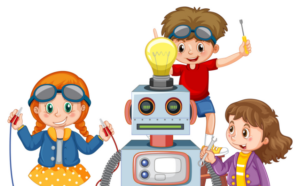In the digital era, education is being redefined by humans and technology whose relationship is symbiotic. From personalized learning pathways to administrative efficiency, educational institutions are beginning to explore the myriad applications of Artificial Intelligence (AI). While we are moving through the world of innovation, it is very important that we recognize that AI tools are not just a fad but a fundamental transformational force within modern education landscape.
Table of Contents
Understanding AI’s Place in Education
For decades, traditional classrooms were where knowledge was exclusive and dispensed. Nonetheless, this one-size-fits-all approach denies each learner’s unique potential. Instead introduce AI and suddenly the narrative changes towards an insightful personalized and effective educational experience. But what does AI actually bring?

AI-Powered Personalization
One of the most captivating promises made by AI is personalized learning. Based on extensive data analysis, these tools can accurately identify a student’s weaknesses, strengths along with their learning style. With that insight; educational software can now adjust lessons, provide extra support as well as address any individual misconceptions right at that moment when they occur making learning more adaptive and engaging.
Adaptive Learning Systems
Modern education rests on adaptive learning which has its roots in artificial intelligence (AI). Teaching systems that adapt dynamically based on students’ performance or progress are already here with us. These systems pose challenges that are neither too easy nor too difficult thereby providing enough support to ensure steady advance of learners.
Enhanced Efficiencies in Administrative Tasks
Classrooms are not the only areas where AI proves useful. As an administrator you could enjoy streamlined operations thanks to AI which would manage resources while predicting trends as well. Suppose there was a virtual assistant for school administrators capable of fixing schedules faster than human beings do handle paperwork faster than regular processes while producing insights useful in strategic decision-making without consistent supervision – all thanks to AI?
Learn more: What Are the Best AI Tools for Enhancing Learning in Education?
AI Tools: Bridging Learning Gaps
The educational system faces many problems, some are age old. AI tools are now stepping in to bridge these long-standing learning gaps thereby ensuring that no student is left behind and making sure resources are allocated where they are most needed.
Learn more: 10 Best AI Tools For Education
Tailoring the Curriculum
Traditionally, curricula have struggled to keep up with an increasingly diverse and rapidly changing world. With AI’s help, course materials can be reviewed and revised accordingly for relevance anchoring on up-to-date information. By relying on AI, higher learning institutions will be able to provide comprehensive learning experiences that give a good run down of events happening in various fields at the moment.
Support for Diverse Learners
It is a given that learning capacities as well as backgrounds are varied when it comes to education. Neurologically diverse learners including those with disabilities and English language learners receive support from artificial intelligence. Unique tools could be suggested by AI which can assist students in understanding and interacting with their coursework according to their unique needs.
Data-Driven Decision Making
Through robust data analytics powered by AI administrators and educators can look at how effective different teaching methodologies or curriculum components have been through a fresh lens. These insights might then inform strategic decisions such as resource allocation, professional development priorities as well as intervention strategies.
Crushing skepticism and overcoming barrier to implementation
However, the inclusion of AI in educational institutions’ working environment is not a walk in the park; there are stumbling blocks that teachers as well as administrators have to overcome such as skepticism, logistics bottlenecks and steep learning curves. Nonetheless we will soon discuss why the advantages outweigh initial obstacles.
Addressing the Digital Divide
One of the biggest concerns about AI in education is the existence of a digital divide. Some students have no access to technology as others and there is a possibility of enhancing inequality by implementing AI tools inappropriately. The schools should not only apply AI, but also ensure that it is deployed with support systems and training that take care for both access and usage.
Teachers as Co-Creators of AI
AI would work better if seen as a tool rather than a substitute for humans. Teachers’ involvement in designing and implementing AI tools can lead to successful blending between technology and pedagogy.

Building a Culture of Innovation
For one introduction, education needs to change its culture to accommodate artificial intelligence. It requires trying out new things, being flexible enough to adapt, and acknowledging that an educator’s role has shifted. Those schools that create an innovative atmosphere are more likely to integrate AI into their programs successfully.
The Growing Domain of AI in Teacher Training
Coming back full circle to the centrality of teachers, it becomes obvious that trainers must involve AI tools too. Teacher preparation programs may use AI-enabled platforms that simulate real classrooms, offer personalized mentorship experiences and contain professional development resources meant for individual growth areas.
Learn more: Uses of AI Tools in Education
Simulated Teaching Environments
AI can provide sophisticated simulations enabling aspiring educators appreciate dynamics and challenges within classrooms. Trainees get hands-on experience on how they handle different situations through these sites; they also receive immediate responses from their actions besides evaluating their performance privately without any threat.
Personalized Professional Development
Just like students need personalized attention from their teachers so do teachers require one themselves from artificial intelligence (AI). Through assessing what practices teachers engage in along with student outcomes this can be done by learning algorithms which might suggest areas for improvement while delivering tailor-made professional development materials as well as courses or even coaches aimed at aiding continuous growth.
Redefining the Role of Educators
In an era marked by AI, teachers are no longer just lecturers but learning guides. As AI becomes more administrative and instructional in nature, instructors can shift into other roles such as mentoring the students in critical thinking and fostering a desire for knowledge.

Shaping Responsible AI Use in Education
The advent of this technology requires that it should be used responsibly with regard to the future of education. This involves safeguarding student data and privacy as well as promoting critical literacy concerning AI among all stakeholders.
Promoting Data Literacy
For both educators and learners, there is no option but to gain a deeper understanding about data, artificial intelligence (AI) and how they work. The focus must be on giving members of the educational community background knowledge to enable them apply evaluative skills when using these tools.
Conclusion
To sum up, the increasing popularity of AI tools in schools is because they cater to the needs of tutors and pupils. Consequently, these instruments create conditions for individual learning, ensure flexible teaching approaches, involve information analysis. Furthermore, AI eases administrative procedures; makes resource allocation efficient and supports diversity of learners. As technology continues to evolve, AI integration into education could boost student motivation in class and online performance while making learners ready for digital age requirements.
FAQS
In what ways can AI tools be of use in educational places?
Through data analysis, AI tools improve teaching and learning processes by offering customization in learning experiences, adaptive delivery approaches, and insights that are useful.
How is the adoption of personalized learning experiences made possible through the use of AI tools?
AI tools provide flexible content and pacing which can adapt to a student’s individual learner profile. This way, personalized help and challenges get to be given to learners.
What role does the use of AI tools play when addressing different learning needs?
AI tools provide an array of resources and interventions that take into consideration all kinds of learners irrespective of their styles or abilities thus fostering equity and inclusion in education.
How do educators’ teaching methods improve with the help from AI tools?
AI offers feedback based on data that educators may use to tune their instructional techniques; this is aimed at enhancing student outcomes as well as identify gaps in instructions for further improvement.




